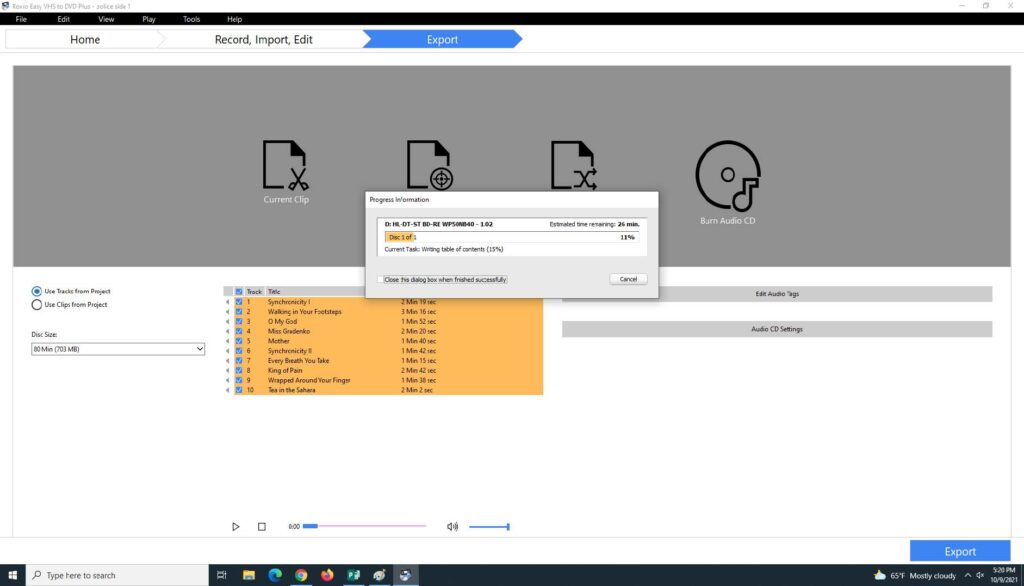To listen to your record before digitizing (optional):
Plug the headphone amp into the turntable, matching the red and white outputs with the color-corresponding inputs.
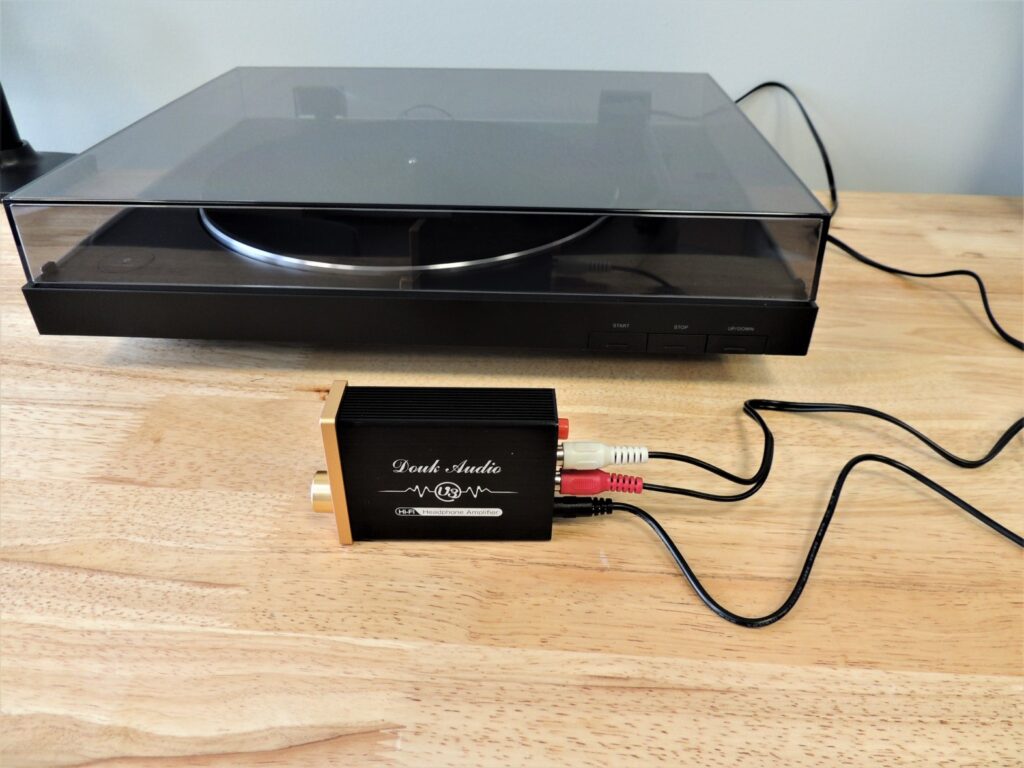
Plug the headphone amp into the computer’s USB port.
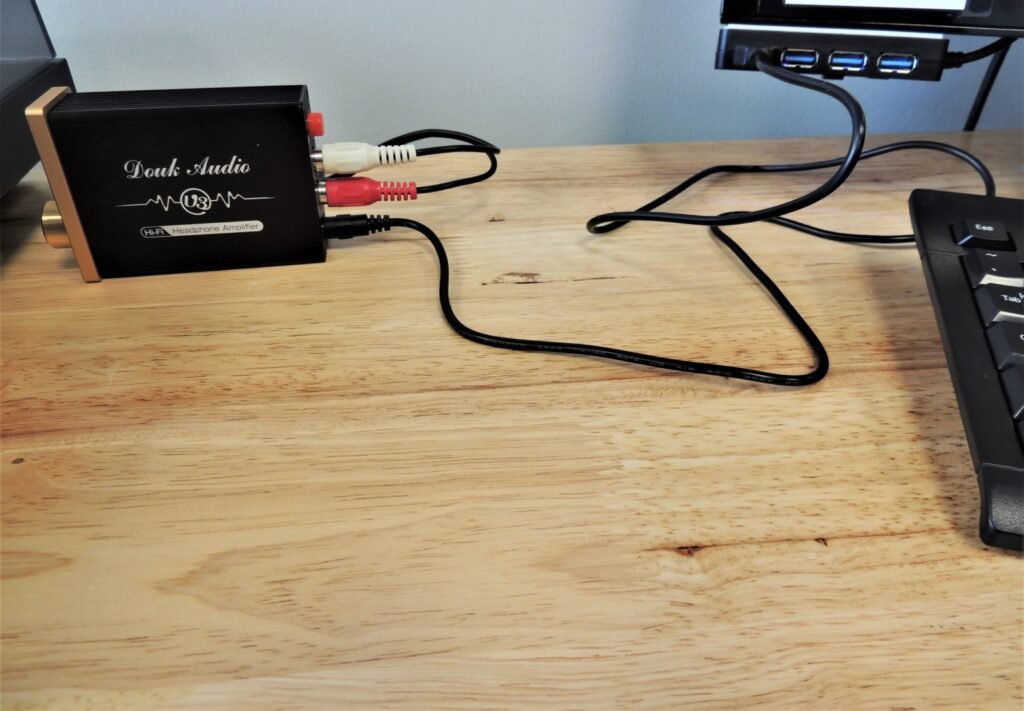
Plug the headphones into the headphone amp.
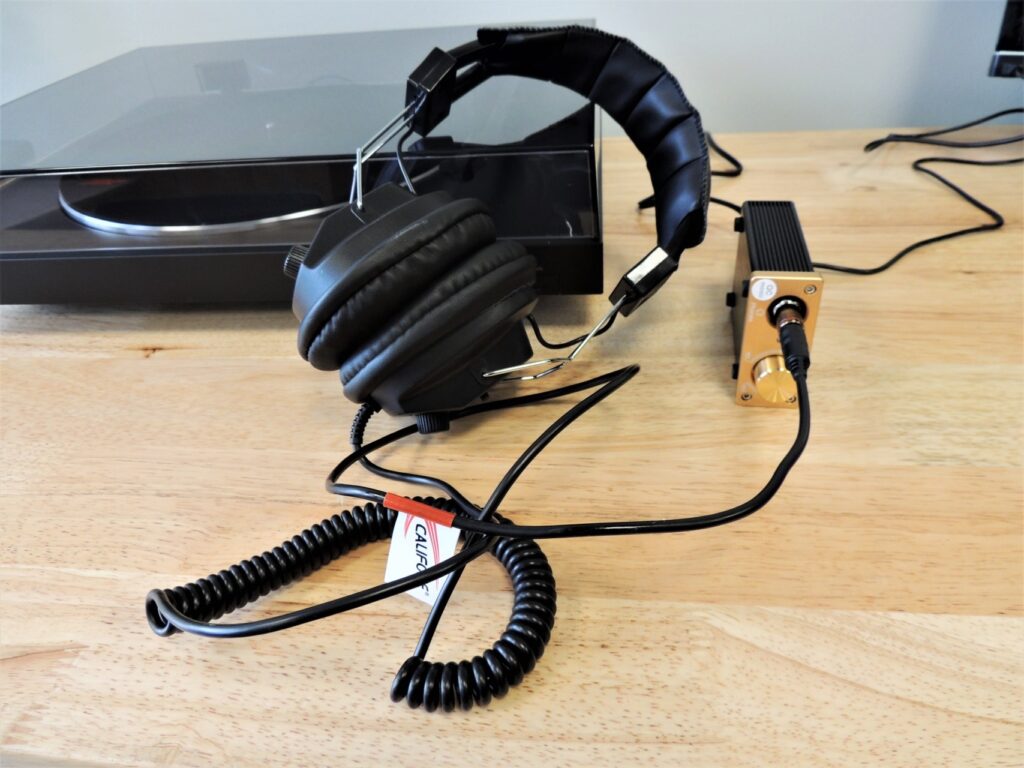
Turn ON the headphone amp’s power button.

1. To digitize your vinyl:
Place your record on the turntable. Select the record’s Size (7 or 12) and Speed (33 or 45).
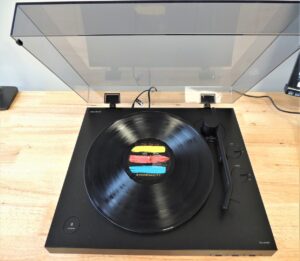
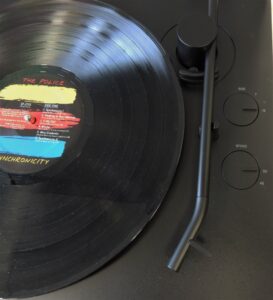
When using 45s, adjust the size to 7 and use the 45 adapter by placing it in the middle of the turntable.
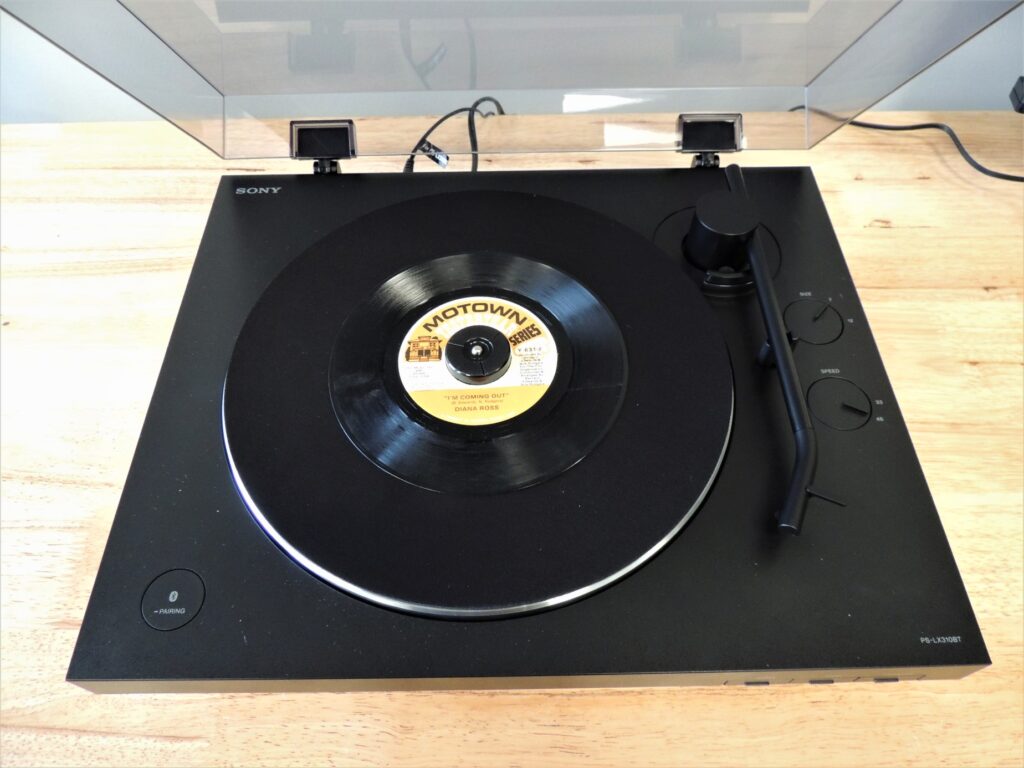
2. Connect the turntable to the Roxio Video Capture USB, matching color-corresponding cables.
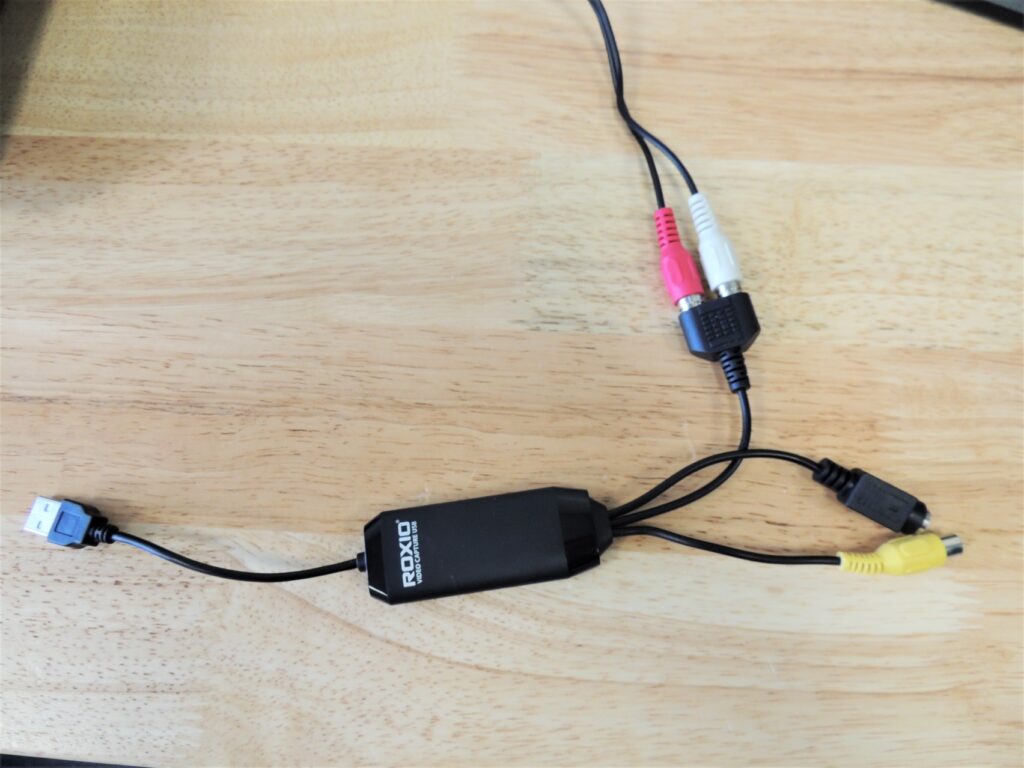
3. Plug the Roxio Video Capture Device into the computer’s USB port.
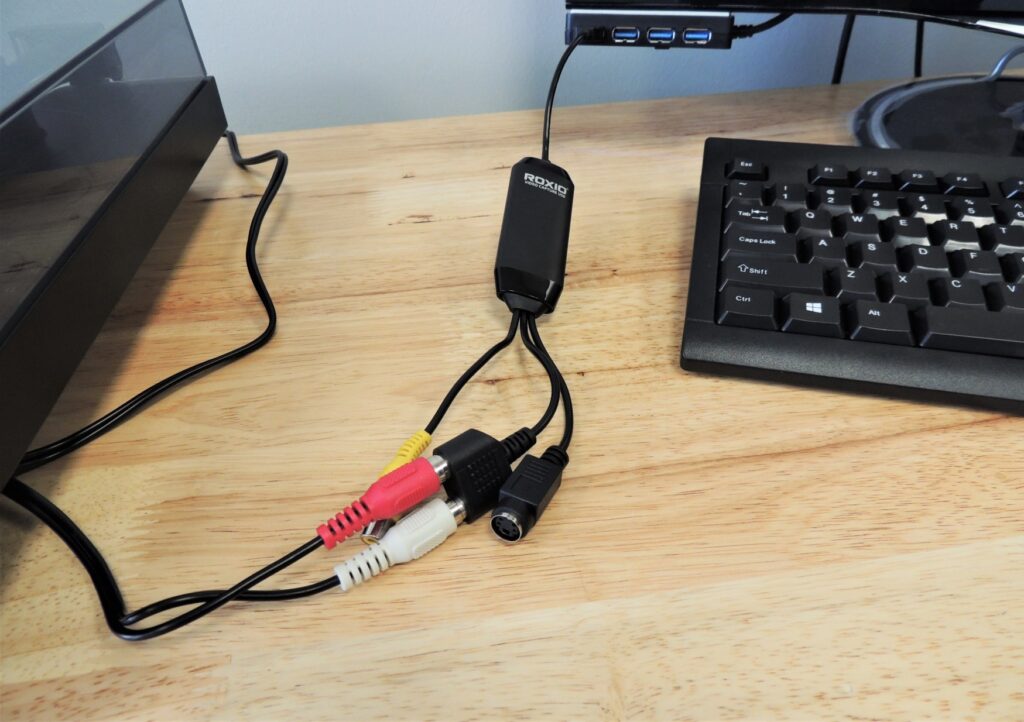
4. Open the Roxio Easy VHS to DVD Plus software. Select Audio from the home screen.
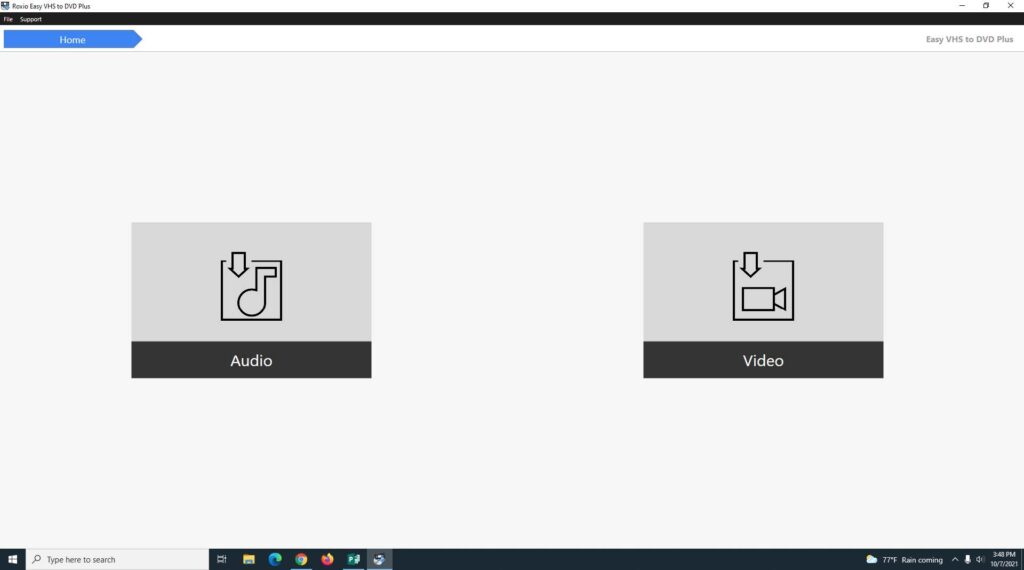
5. Select Record Audio in Roxio.
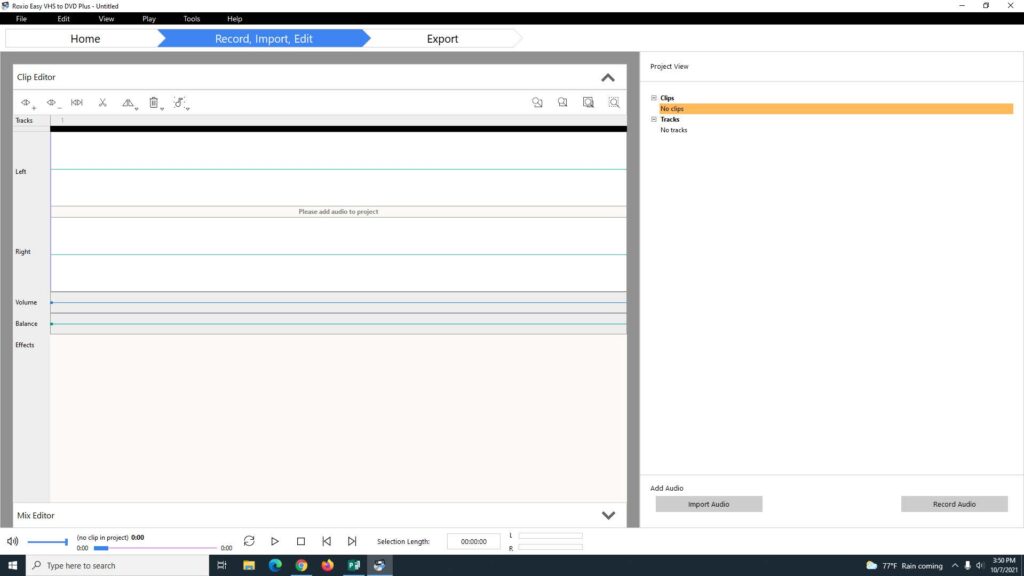
6. Before recording, configure your settings in the Options panel.
To enable Auto Pause to stop recording automatically after an extended period of silence, select the box and choose your silence length.
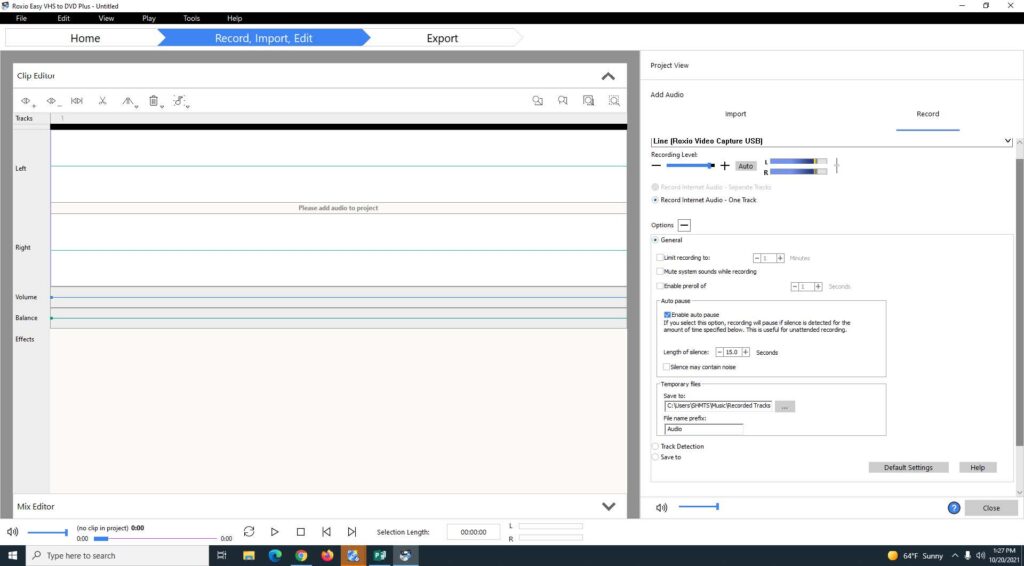
7. To separate tracks while recording, you can manually select breaks between tracks while listening or let Roxio detect tracks automatically. To manually separate your audio into tracks, select Add Track Separator after each track is complete.
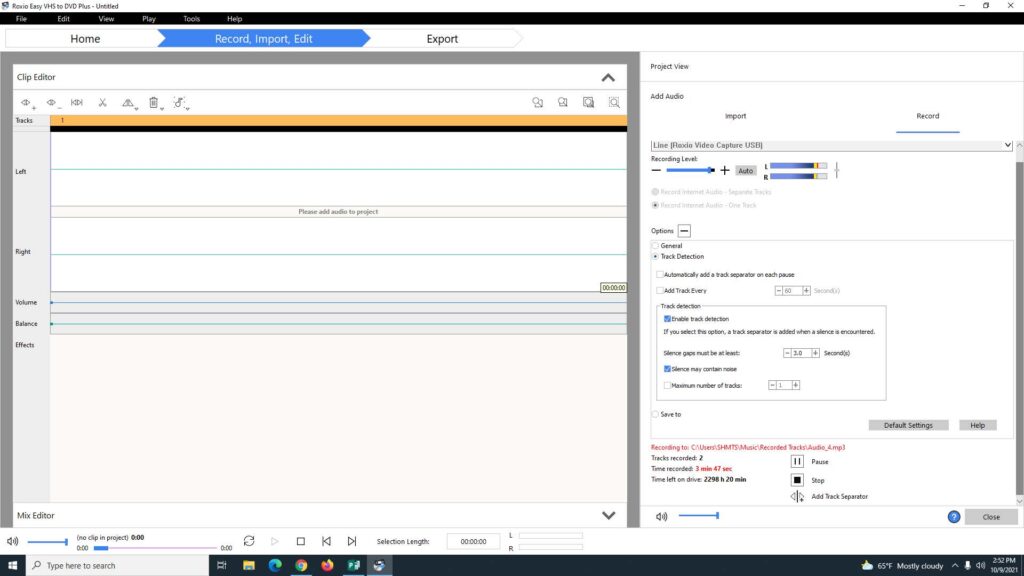
8. To automatically detect tracks (recommended), select Options, Track Detection, Enable Track Detection, and set the silence length gap to your choice. Select the box for Silence May Contain Noise.
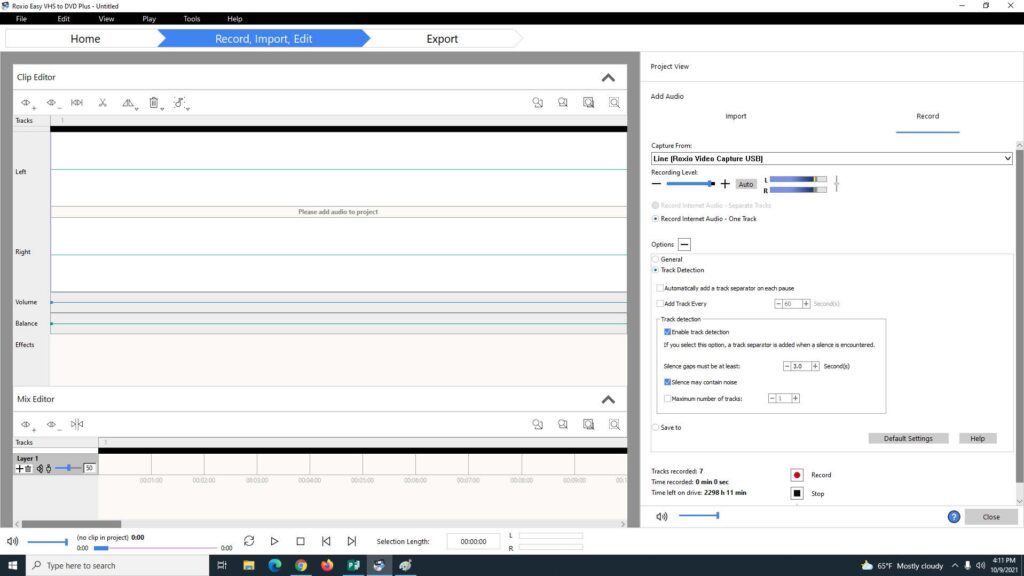
9. When you’re satisfied with your settings, click the Record button to start recording.
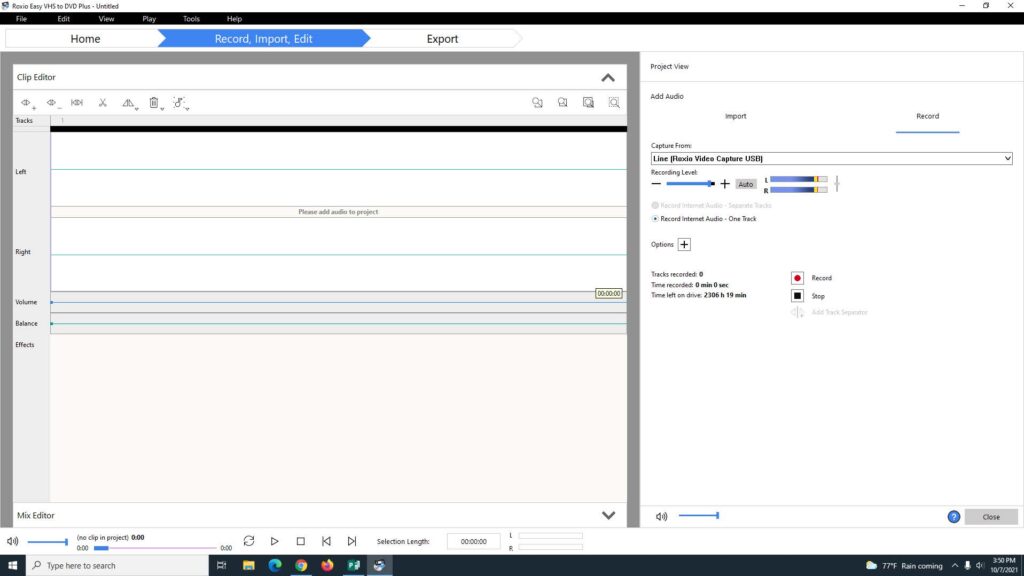
10. Remove the protective needle covering on the turntable and press START. The needle automatically moves into position.
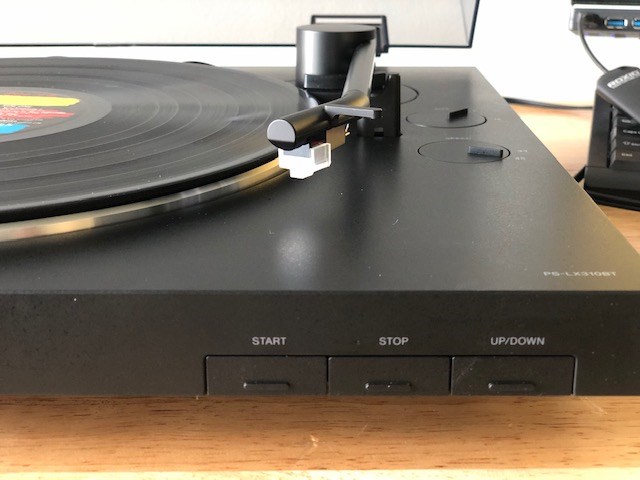
11. When the first side is finished, press Pause on Roxio. Wait for the needle to move back to its start position and then flip the record over.
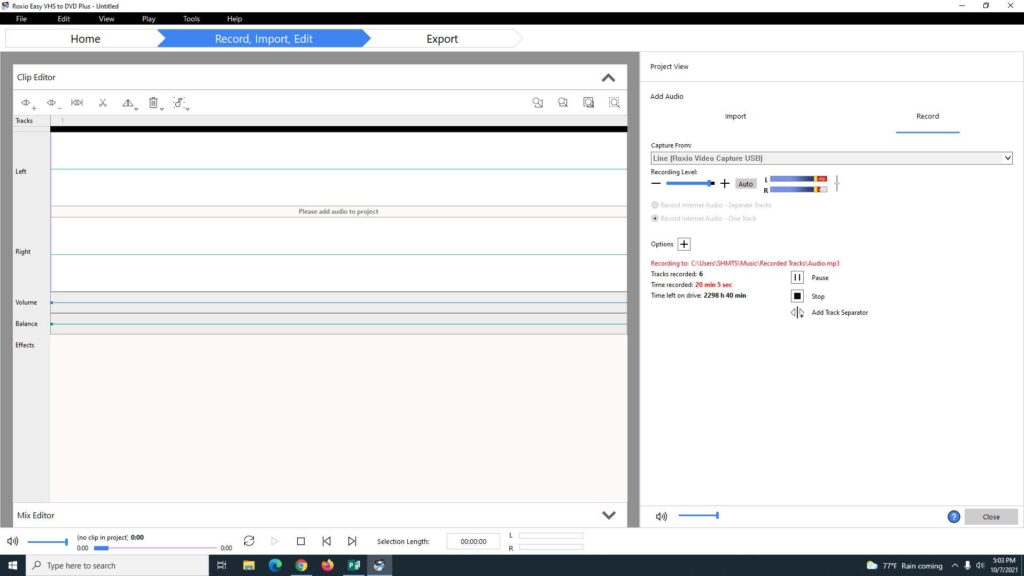
12. Click Resume on Roxio, press START on the turntable, and finish playing the record. When the second side is finished, press Stop on Roxio.
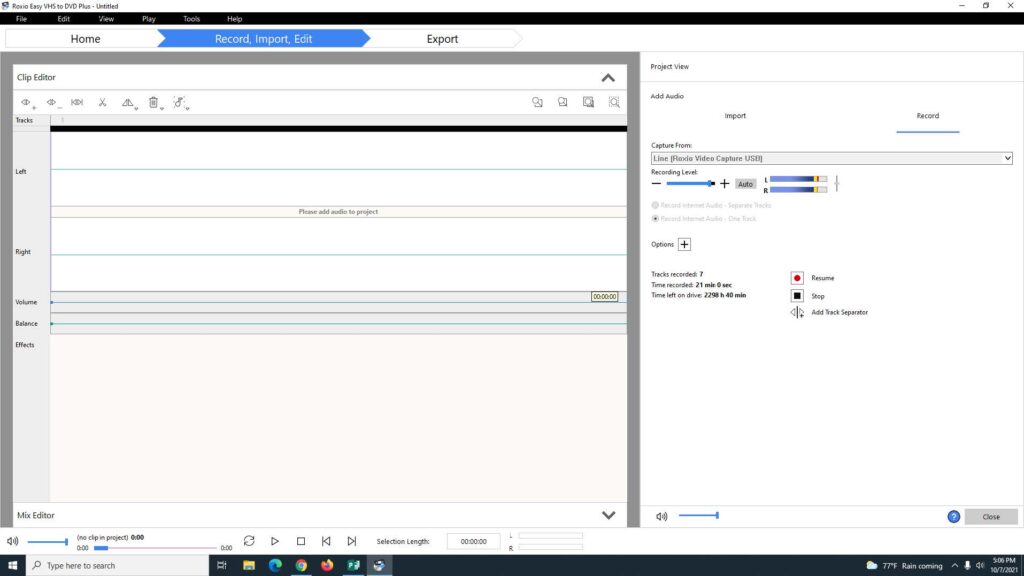
13. After recording, edit your audio using the Clip Editor and Mix Editor.
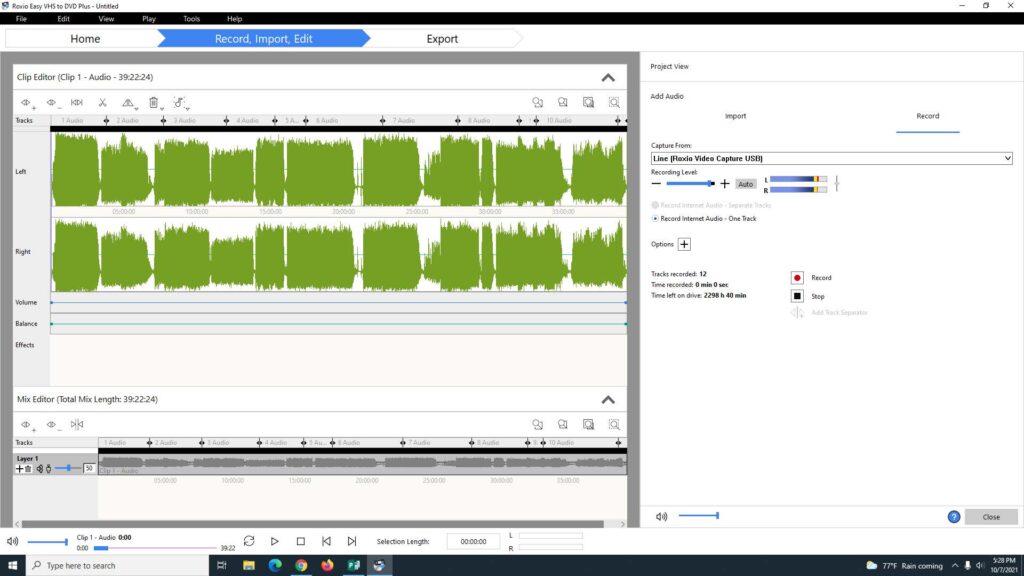
Add song titles, artists, and any additional track information in the Clip Editor by right-clicking on the track and selecting Edit Track Info.
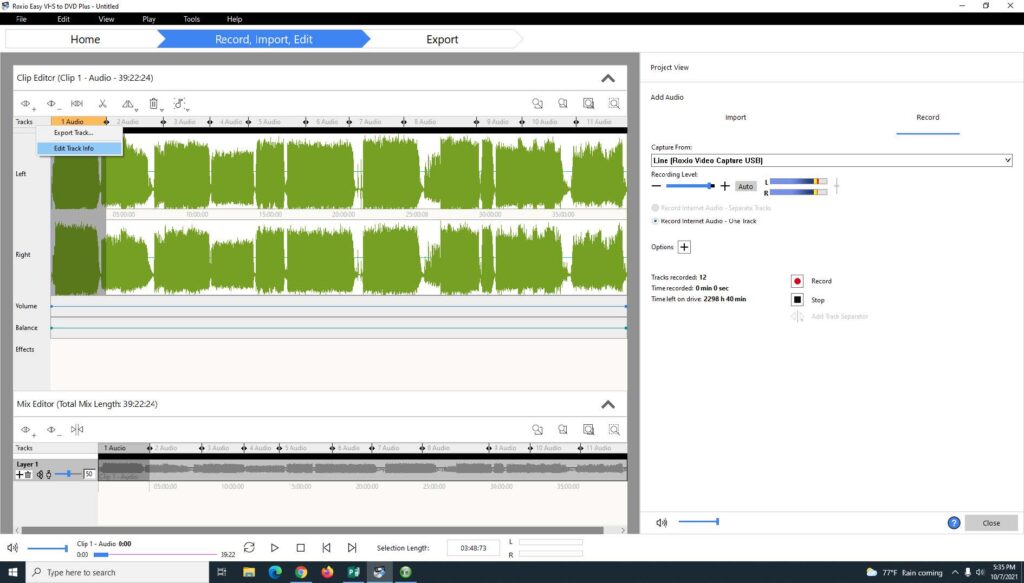
Enter your track information and click Done.
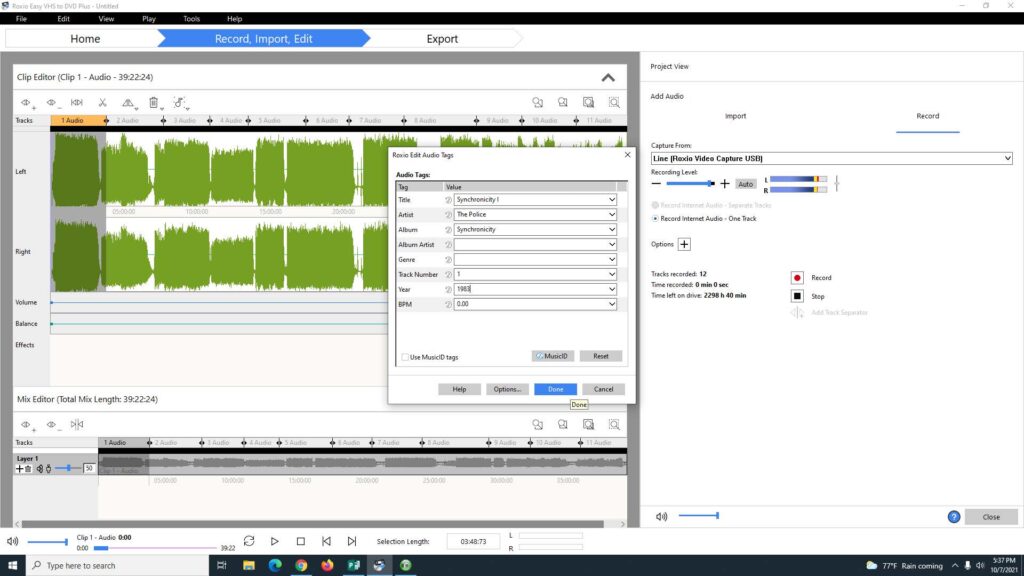
14. Listen to your recorded tracks and remove unwanted audio. To delete audio, click and drag your mouse across the unwanted clip to create a gray highlight and select the scissors icon.
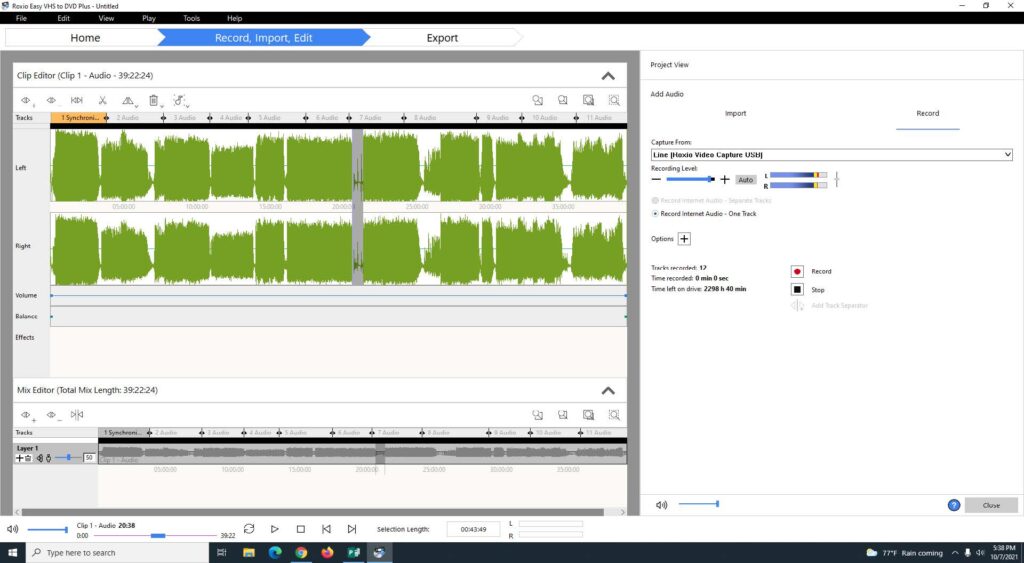
To separate your tracks, use the Mix Editor. Click the up arrow to open the Mix Editor.
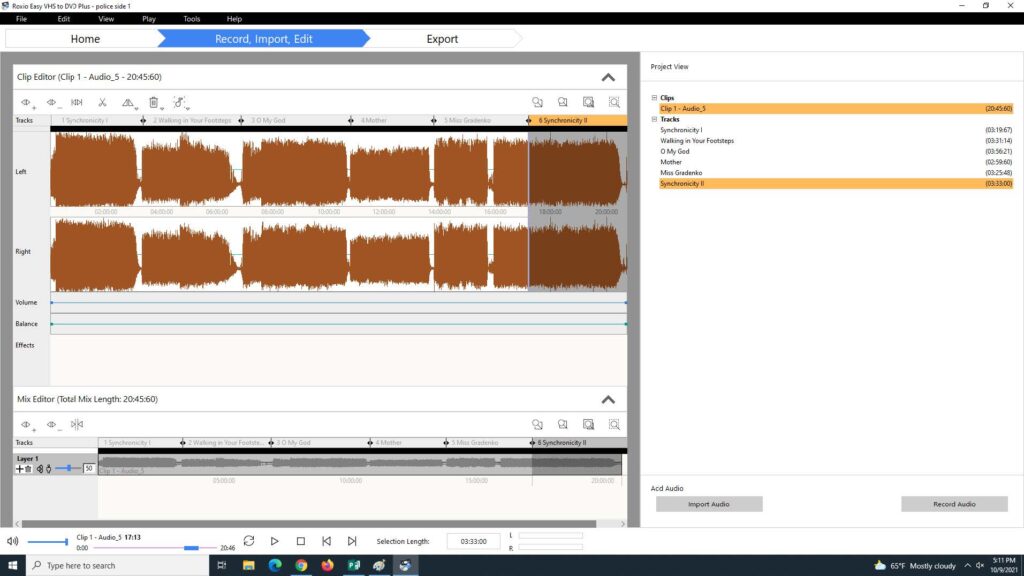
Separate your tracks by clicking and dragging your mouse between the tracks in the gray Track bar to lengthen or shorten, using the play button as needed to determine each track’s length.
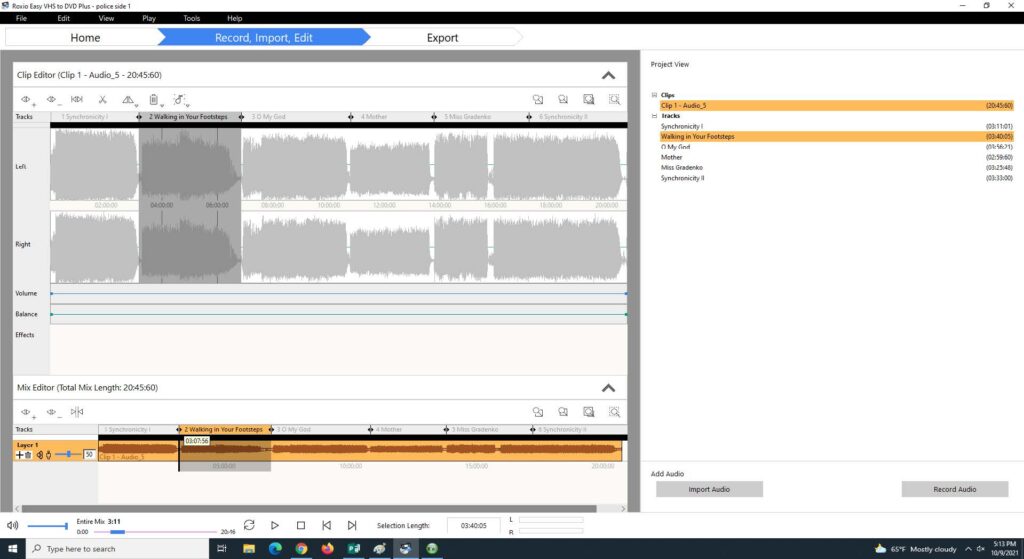
15. Export your audio files to the storage format of your choice. Click Export on the top bar, select Tracks/Clips from the gray menu, check the box for Use Tracks from Project, change the Output settings to the format of your choice (MP3- good quality- is recommended), choose the location to save your audio, then click the Export button in the bottom right-hand corner.

16. To save your audio to a flash drive, insert your flash drive into the computer’s USB port.
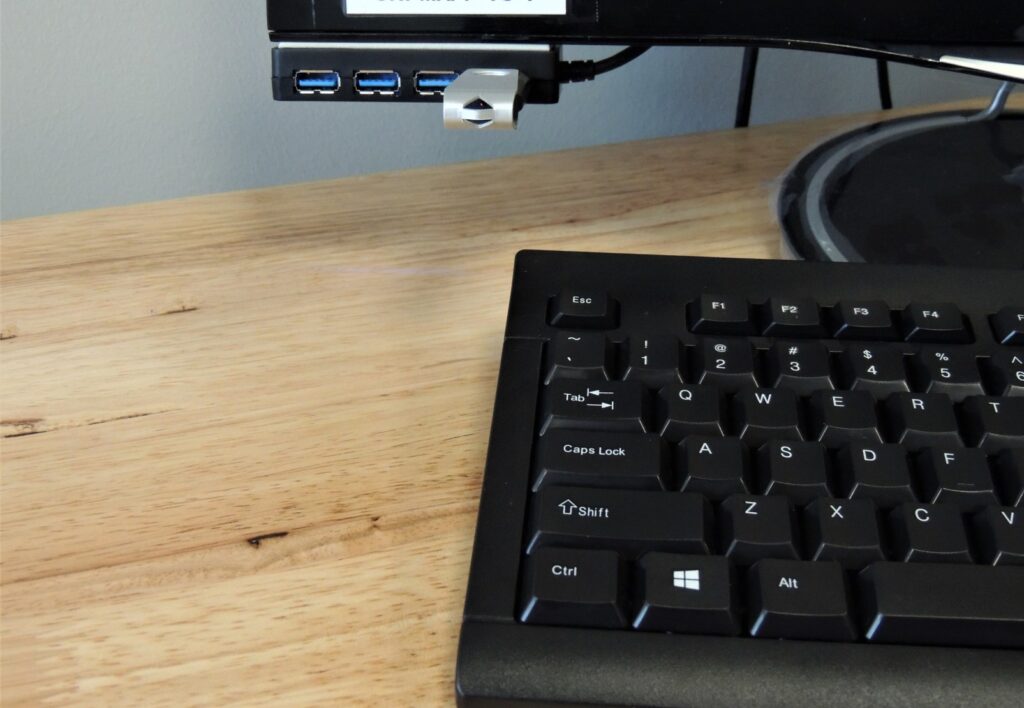
Next, in the Save To menu, click Browse and select your flash drive from the drop-down menu. Then, select OK and Export.
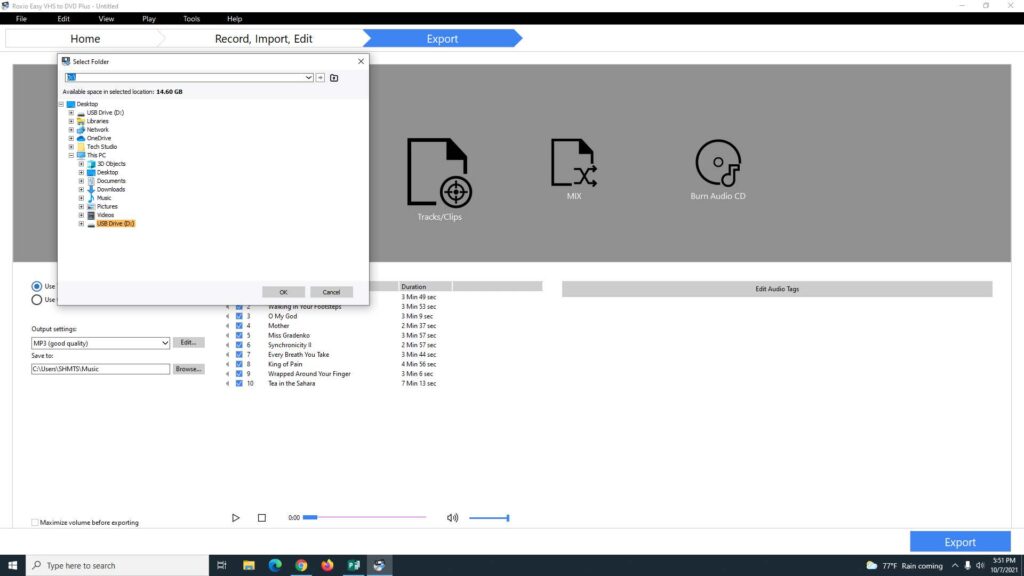
Saving to flash drive tip:
If you see an error message like the one below, you may need to reformat your flash drive.
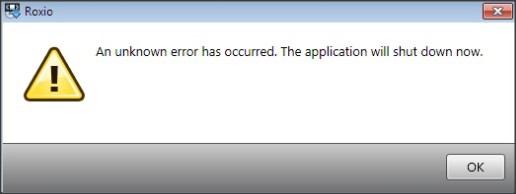
To reformat your flash drive, right-click on the USB and then select Format from the dropdown menu.
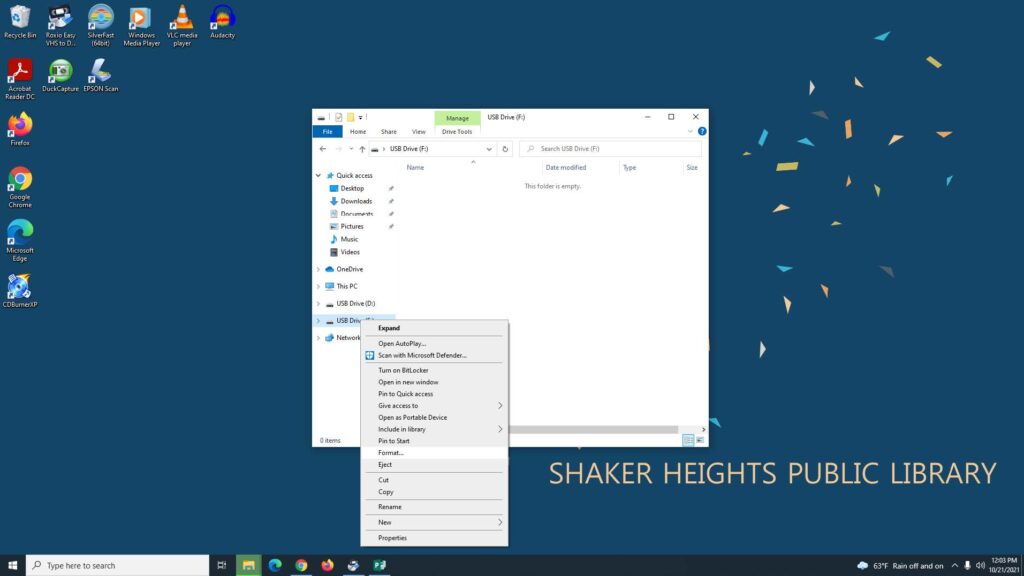
Next, change the File system to NTFS. Then click Start.
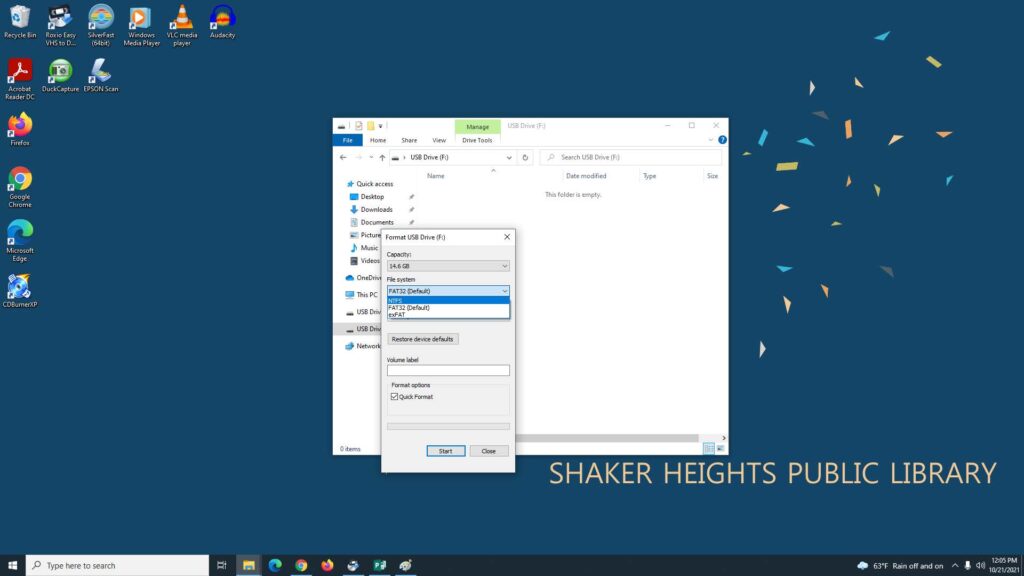
Next, click OK to confirm the formatting.

You will see a message when the formatting is complete. You can then retry saving your file to the flash drive in Roxio.
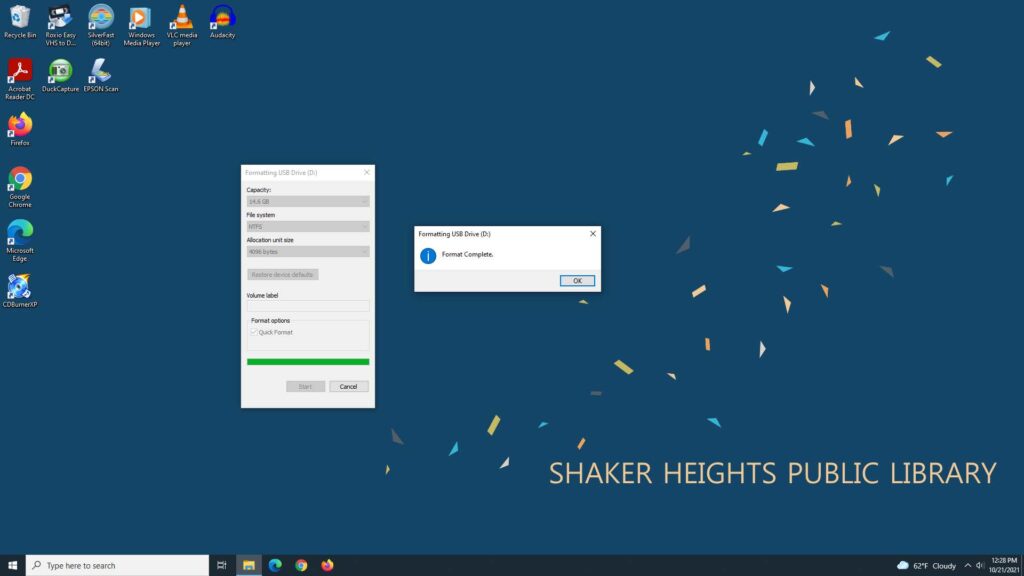
17. To export your audio to a cloud-based platform, save your files to the computer’s desktop and then upload them to the cloud storage of your choice. Click on the Save To dropdown menu and choose the desktop. Then, click OK and Export.
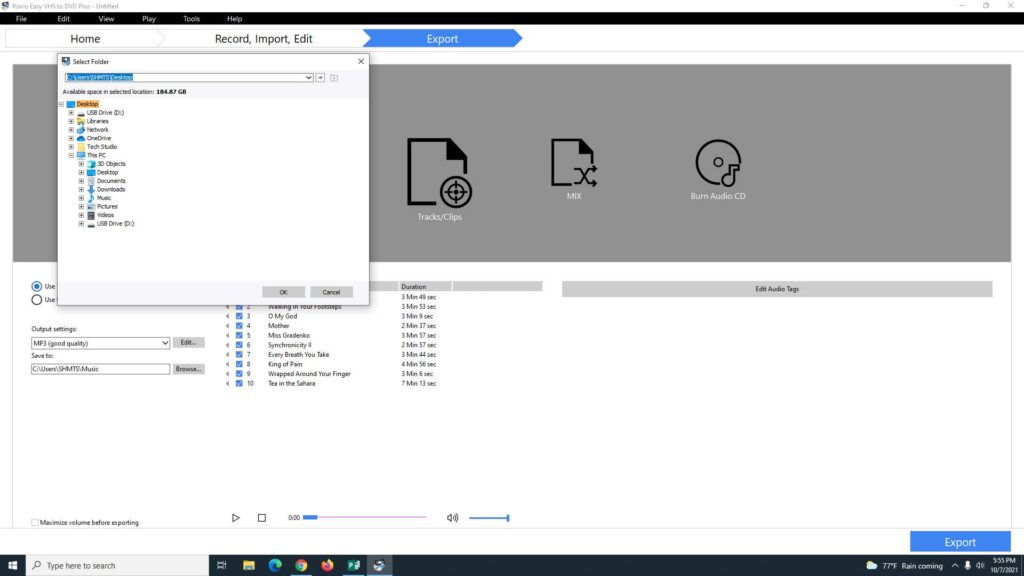
You will see a dialog box confirming your files are exporting to the desktop.
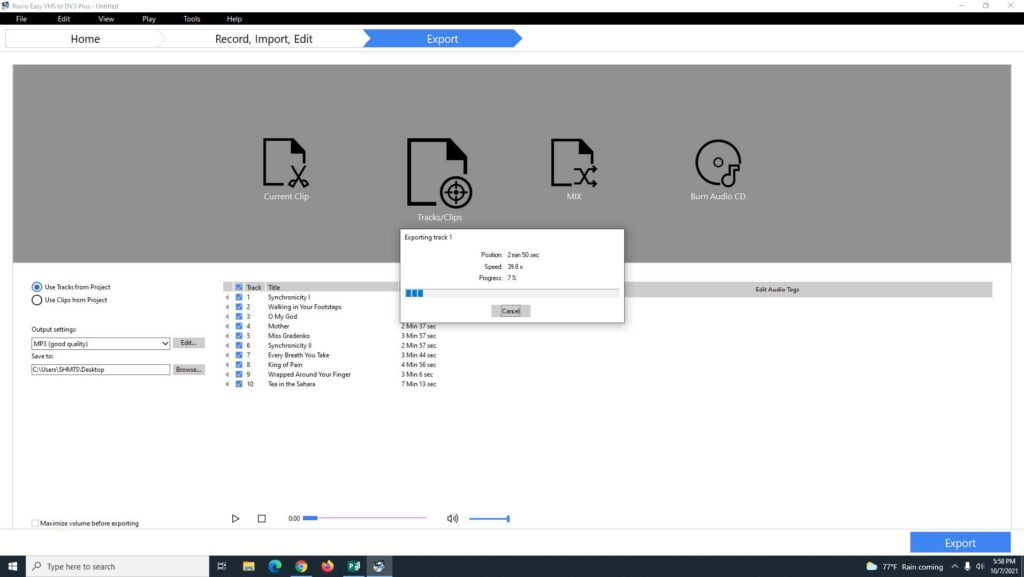
Your audio files are saved in a folder on the desktop and you can upload them to the cloud storage of your choice.
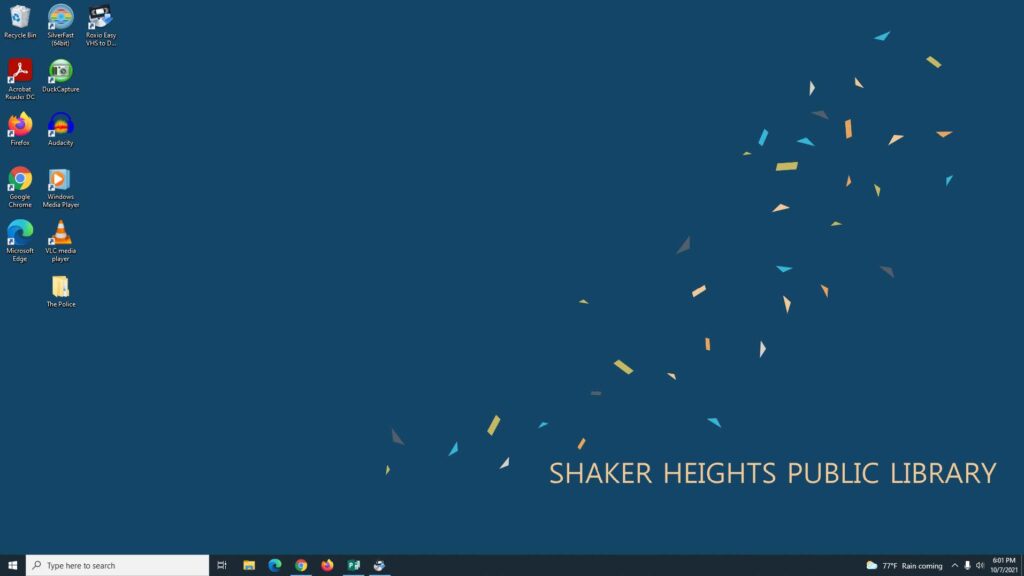
18. To burn your audio to a CD, select Burn Audio CD from the gray menu. Next, select Use Tracks from Project and choose your Disc Size. Then, click Export.

Connect both USB cords from the Blu-ray Writer to the USB ports and insert your blank CD.
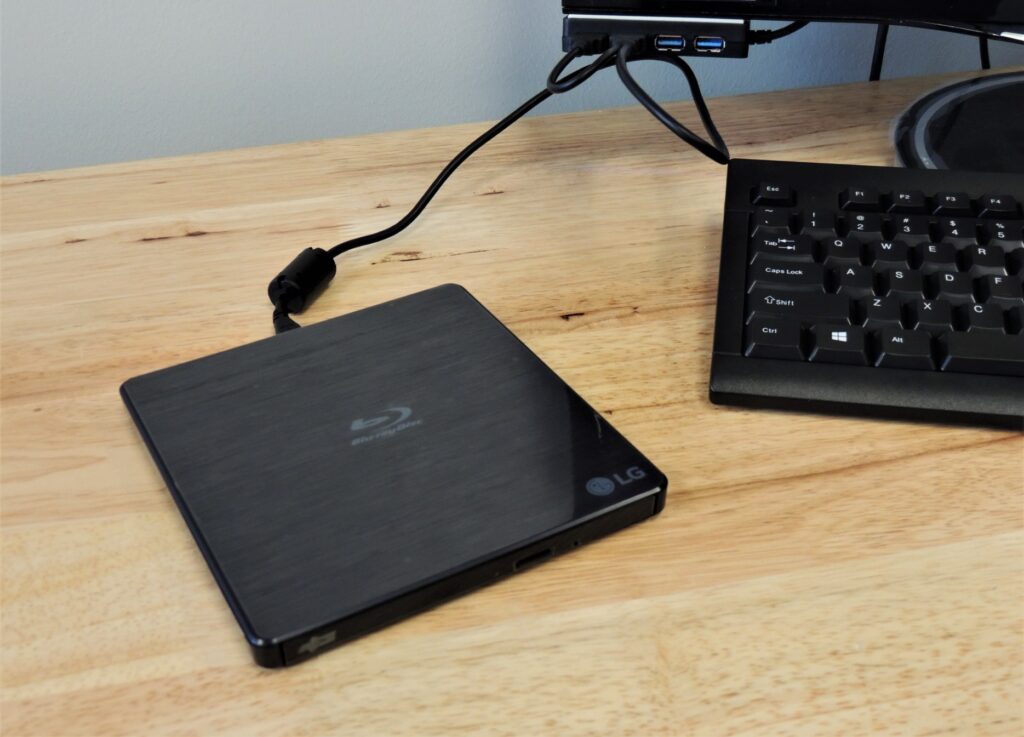
Confirm all settings in the Burn Setup dialog box and then press OK.
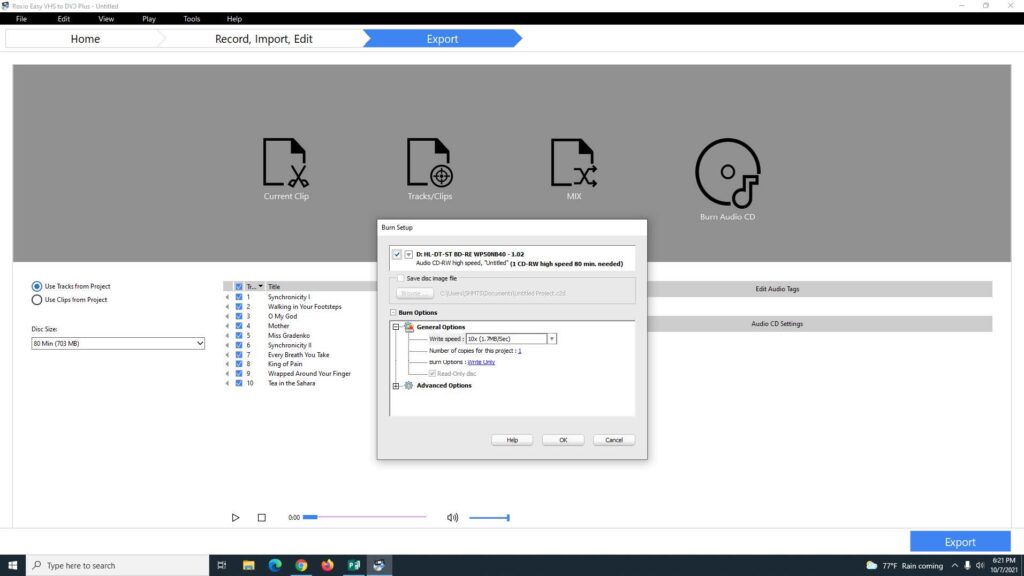
A Progress Information dialog box will appear and Roxio will notify you when the burn completes.
